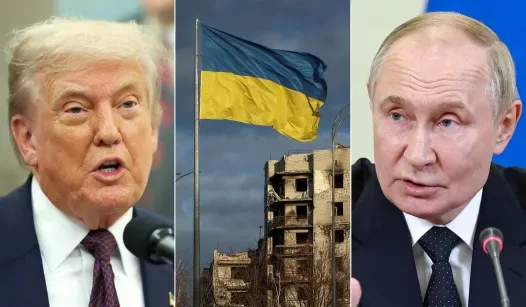The ongoing conflict between Russia and Ukraine has drawn the world’s attention, raising pressing questions about the future of peace in the region. As the war persists, discussions about a potential resolution have become increasingly vital. The most realistic outcome at this stage appears to be an armistice—an agreement to cease hostilities that is robust enough to deter Russia from reigniting its military aggression.
A sustainable peace deal must encompass several critical elements to ensure that both parties can coexist without the looming threat of renewed conflict. First and foremost, any agreement should establish clear terms for a ceasefire, detailing the obligations of both sides to halt military operations. This ceasefire must be monitored by international observers to maintain accountability and build trust among the parties involved.
In addition to a ceasefire, the deal should address the territorial disputes that have fueled the conflict. While it is unlikely that either side will fully concede on territorial claims, a compromise may be necessary. This could involve recognizing certain regions as autonomous or allowing for temporary governance arrangements that respect the interests of both Ukraine and Russia.
Another essential aspect of a potential agreement is the establishment of a framework for dialogue. Continuous communication channels between the two nations can help prevent misunderstandings and reduce tensions. This dialogue should include not only government representatives but also civil society and local leaders who can contribute to a more inclusive peace process.
Economic considerations will also play a crucial role in any peace deal. The war has had devastating effects on both economies, and a path to recovery must be outlined in the agreement. This could involve international aid, investment in reconstruction, and trade agreements that benefit both nations. A thriving economy can help foster stability and reduce the likelihood of future conflicts.
Furthermore, addressing the humanitarian crisis resulting from the war is imperative. Millions of people have been displaced, and their needs must be prioritized in any peace negotiations. This includes provisions for refugees, support for those affected by the conflict, and a commitment to rebuilding war-torn areas.
Lastly, the involvement of international actors cannot be overlooked. The role of organizations such as the United Nations, the European Union, and NATO will be crucial in facilitating negotiations and ensuring that the terms of the peace deal are upheld. Their presence can provide the necessary leverage to encourage compliance and foster a sense of security for both parties.
In summary, a feasible peace deal in the Russia-Ukraine conflict will require a comprehensive approach that addresses military, territorial, economic, humanitarian, and diplomatic dimensions. While the path to peace may be fraught with challenges, a well-structured armistice can serve as a foundation for lasting stability in the region. As discussions continue, it is essential for all stakeholders to remain committed to a peaceful resolution that prioritizes the well-being of the people affected by this devastating conflict.
